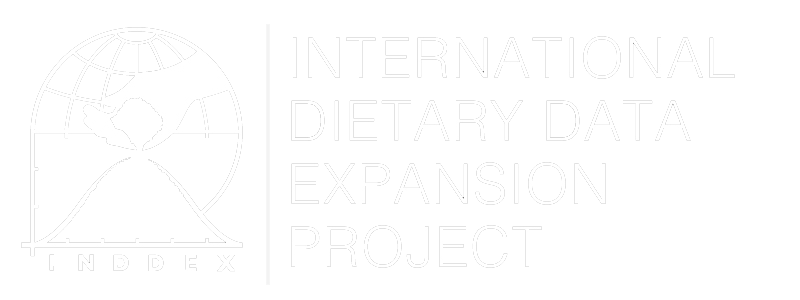Household Hunger Scale (HHS)
Overview
The Household Hunger Scale (HHS) is one of the four experience-based food insecurity scales included in the Data4Diets platform, along with the Household Food Insecurity Access Scale (HFIAS), the Latin American and Caribbean Food Security Scale (ELCSA), and the Food Insecurity Experience Scale (FIES). The HHS, derived directly from the HFIAS, is different from the other household food insecurity indicators because it assesses only the most severe experiences of food insecurity. The three hunger-related aspects of insecure food access included were shown to be invariant across multiple sociocultural contexts (Deitchler et al., 2010), allowing for cross-country comparisons. The FIES is also validated for cross-country comparisons using different psychometric criteria from the HHS, which includes a broader range of questions related to the food insecurity experience (i.e. not just extreme food insecurity). In contrast, the ELCSA is only validated for the Latin America and Caribbean context, while the HFIAS has limited cross-country comparative ability.
Method of Construction
The HHS module consists of three "occurrence" and three "frequency-of-occurrence" questions, that should be answered according to the household food security experience in the previous 30 days. The respondent is first asked if a given condition was experienced (yes or no) and, if it was, with what frequency (rarely, sometimes, or often). All questions are worded to be as universally relevant as possible, and focus strictly on the hunger-specific experience of insecure access to food.
The resulting responses can be transformed into either a continuous or a categorical indicator of hunger. When calculating the HHS as a continuous indicator, each of the six questions is scored 0- 2, with 2 being the highest frequency of occurrence. The score for each of the three questions is then added together, the totalHHS ranging from 0 to 6, which indicates the degree of insecure food access. Households can also be categorized as "little to no hunger in the household" (0-1), "moderate hunger in the household" (2- 3), or "severe hunger in the household" (4-6). For more guidance, see Table 6 on page 13 in Ballard et al., 2011.
Uses
The HHS can be used to observe the prevalence of hunger over time and across countries or regions, informing policies and programs of food insecurity and hunger. It can also be included in nutrition and food security surveillance systems, informing humanitarian responses. For example, the HHS is one of the main indicators used in the Integrated Food Security Phase Classification System (IPC), an approach developed to measure and address acute food security crises (IPC, 2012). Additionally, the United States Agency for International Development (USAID) requires that all of their Bureau for Humanitarian Affairs food assistance projects utilize HHS in both baseline and endline evaluations (FANTA III, 2015).
Like other experience-based food insecurity scales, the HHS does not quantify food consumption nor assess adequacy of diet quality; doing so would require other methods and indicators, such as 24-hour dietary recalls to calculate the Mean Adequacy Ratio (MAR), or a diet diversity index to determine the Minimum Dietary Diversity Score for Women (MDD-W).
Strengths and Weaknesses
The HHS requires little time for implementation and allows for valid comparisons over time, across countries or regions, and among important demographic groups, such as different female- versus male-headed households (Deitchler et al., 2010).
Due to the focus of the HHS on the more severe food insecure behaviors, such as skipping meals or going to bed hungry, it is generally only useful in contexts with severe food insecurity and, as such, was heavily used during the peak of the Somalia famine in 2011/12 (Maxwell et al., 2013). Similar indicators, such as FIES, ELCSA, or HFIAS may be more appropriate for detecting the full range of food insecurity.
When data are collected at the household level, the selected respondent, usually the primary food preparer, may not always be in a position to accurately represent the experience of all household members. If any member of the household is reported as experiencing a food insecurity condition on the questionnaire, the entire household is classified as food insecure. This means the indicator potentially overestimates the number of food insecure individuals in a household, while providing an accurate count of households with at least one member experiencing food insecurity. Relatedly, bias may be introduced from the fact that the selected respondent's perception of their household's experience is not representative of all other household members (Coates et al., 2010).
Finally, the HHS can also be used as an individual-level indicator, although in that case results would not be comparable to other studies that used household-level data.
Data Source
The HHS is a short module that consists from three to six questions that can be included as part of household surveys. Detailed guidance for adapting and implementing the indicator, as well as the module itself, is available in the HHS guide created by FANTA (Ballard et al.,2011).
Links to Guidelines
- Ballard et al. (2011). Household Hunger Scale: Indicator Definition and Measurement Guide. Washington, DC: Food and Nutrition Technical Assistance II Project, FHI 360.
- Maxwell et al. (2013). How Do Different Indicators of Household Food Security Compare? Empirical Evidence from Tigray. Feinstein International Center, Tufts University: Medford, USA.
- IPC Global Partners (2021). Integrated Food Security Phase Classification Technical Manual Version 3.1. Evidence and Standards for Better Food Security and Nutrition Decisions.
Links to Validation Studies
Links to Illustrative Analyses
- Hedlund et al., (2013). "Final Evaluation of the Unconditional Cash and Voucher Response to the 2011–12 Crisis in Southern and Central Somalia."
- Maxwell et al., (2014). "How do indicators of household food insecurity measure up? An empirical comparison from Ethiopia."
- Nkegbe et al. (2017). Food security in the Savannah Accelerated Development Authority Zone of Ghana: an ordered probit with household hunger scale approach. Agriculture & Food Security.
- Cooper et al. (2019). Hunger, nutrition, and precipitation: evidence from Ghana and Bangladesh. Population and Environment.
